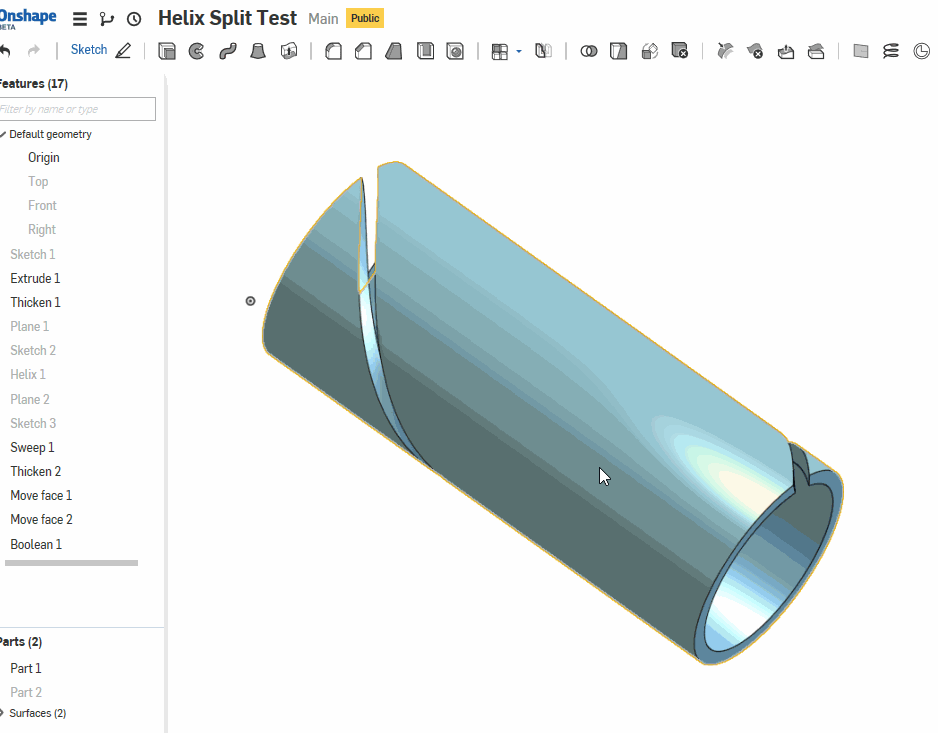Welcome to the Onshape forum! Ask questions and join in the discussions about everything Onshape.
First time visiting? Here are some places to start:- Looking for a certain topic? Check out the categories filter or use Search (upper right).
- Need support? Ask a question to our Community Support category.
- Please submit support tickets for bugs but you can request improvements in the Product Feedback category.
- Be respectful, on topic and if you see a problem, Flag it.
If you would like to contact our Community Manager personally, feel free to send a private message or an email.
Helix Split Test
I had presumed that if I were to manage to split a part it would be two separate pieces. Therefore in my public document " Helix Split Test " I've accomplished splitting a tube with a helical extrusion by using Boolean-Remove but the resultant parts are still one part. It appears that my presumption is incorrect. Can anyone clarify for me or suggest a method to accomplish splitting this tube on a helix and removing one half.
Thanks All

Thanks All

0

Comments
Dave
It's not an Onshape issue, it's an issue with topology. What you have modelled is actually a single body, and you could roll it flat.
It's like the core of a roll of toilet paper, or a strangely proportioned spring (regardless of how many turns it has, a spring is a single body)
Thanks, Dave
https://cad.onshape.com/documents/b44e56afe96b418d8ff9b836/w/e2dc917921604b38b4930a00/e/a66ef772d5a64413bdd5fded
I copied @DaVicki's lead in thickening a surface to produce the hollow cylinder, but normally I would do a solid extrude of two concentric circles.
I didn't do a Boolean subtract; I used "Split (Part)" because I figured that was what Dave was setting out to try to achieve.
Here's the helical SURFACE (not solid body) I used as the tool for the Split (Part) Feature :
(the straight line is the path: the helix is not used, except to make a coincident constraint for one end of theprofile line. I made the profile as two lines, equal length and parallel, but I could have used a midpoint constraint of one line to the path, probably. It was just a quick and dirty adaptation of the previous model, which was the same but "single start" and if failed to split the body, for topological rather than capability reasons, as mentioned earlier.)
So here's a thought experiment which might convince those who still think Dave's original was two bodies: if you laser-fuse one of the helical interfaces between the two bodies in my solid model in this post, you effectively end up with what he tried to model, but your weld has combined them into one body.